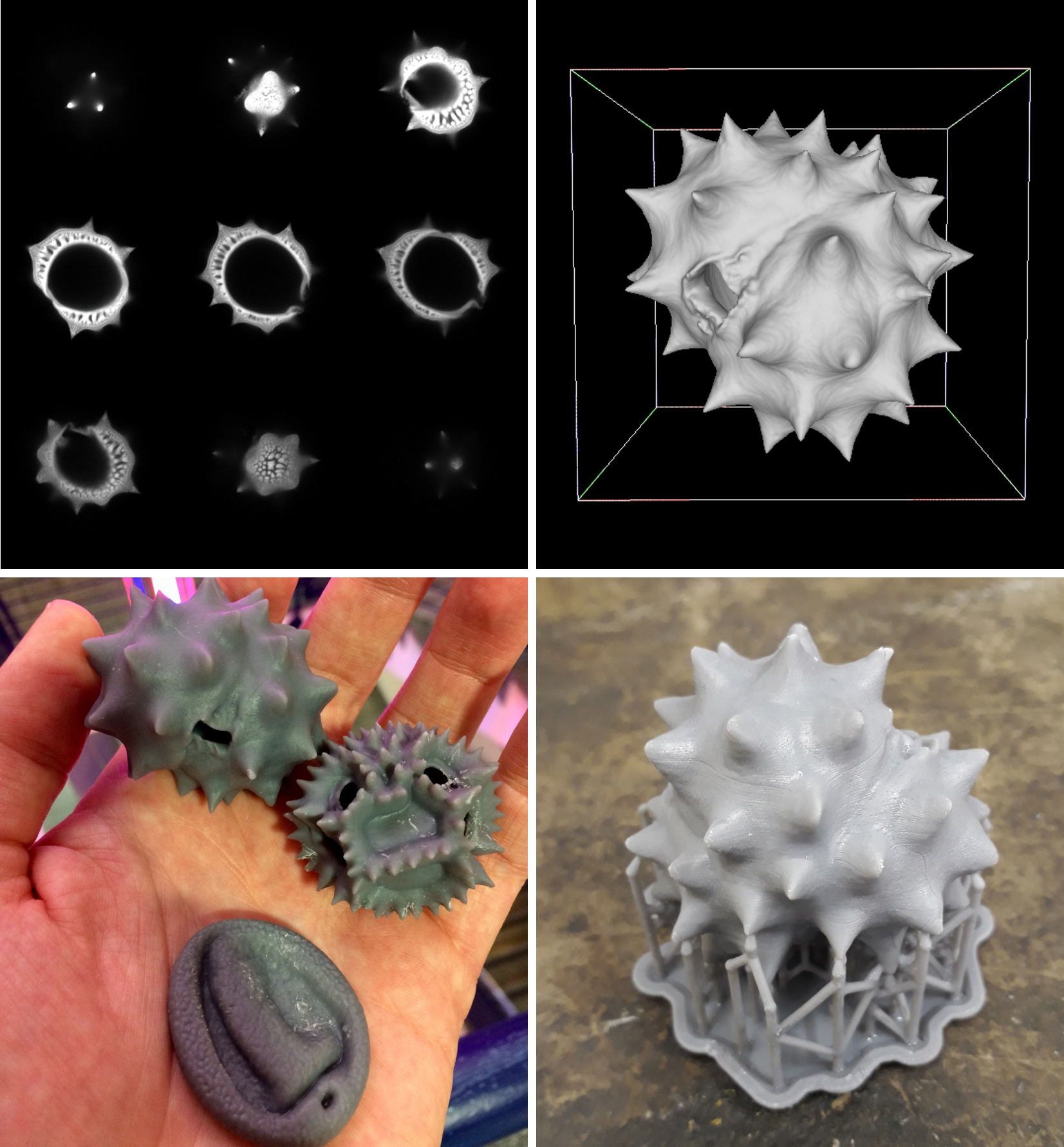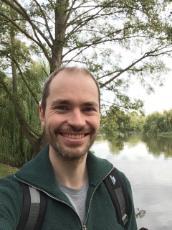
The 3D Pollen Project
Pollen is fundamental to the functioning of the natural world, and to the sciences which research it.
Context
The flow of beautifully patterned pollen grains underpins plant reproduction, ecosystem function, productivity (e.g. through commercial honey production and crop pollination) and ultimately human health (the decline of animal pollinators threatens a raft of critical ecosystem services across the globe). Immensely tough outer shells keep pollen preserved in sediments and rocks; from geological to human timescales, fossil pollen can reveal species’ and ecosystems’ resilience and adaptation to shifting climates and societal interactions (palaeoecology). Hay fever may affect hundreds of millions of people worldwide, but pollen is far more than just a major human allergen.
Engaging non-specialists with pollen-related research can be challenging, though – not least because pollen is microscopic. This means any interactions with pollen must be visual, using microscopes (challenging in most public engagement situations) or 2D images, neither of which fully convey the grains’ 3D shapes or patterning. The 3D Pollen Project allows people to interact with pollen in entirely new ways: as well as producing new kinds of images, its 3D-printed models – morphologically accurate and larger than life – allow audiences to interact with pollen through touch, holding these microscopic marvels in their hands. In these ways, this project aims to help bring the worlds of pollen and related research close to people, wherever and whoever they are.
Key Aims & Objectives
- To create a comprehensive (hundreds to thousands of specimens), globally relevant (geographically, ecologically, morphologically and phylogenetically representative), and freely available online dataset of 3D pollen data, and 2) To work with partners to use 3D pollen resources to engage with audiences around pollination and palaeoecological research:
- With RHS Garden Harlow Carr, to create interpretation resources and school workshops that help connect bees and their apiary with visitors and the wider garden;
- With the Universities of Hull and Glasgow, and with Natural England, to train volunteers in pollen identification to help uncover the past of the Humberhead Peatlands National Nature Reserve, and to explore prospects for citizen science approaches in palaeoecology;
- With the State University of Campinas and Kaingang communities in southern Brazil, to share findings from research into past connections between the area's people and landscapes, and to investigate how Indigenous worldviews and traditional ecological knowledge can complement ecological interpretations of palaeoecological data.

Dr Oliver Wilson, NERC Knowledge Exchange Fellow, Dept of Environment and Geography
Dr Oliver Wilson, Knowledge Exchange Fellow, Dept of Environment & Geography, University of York
Prof Robert Marchant, Mentor, Dept of Environment & Geography, University of York
NERC (Natural Environment Research Council)
RHS Garden Harlow Carr
Harrogate and Ripon Beekeepers Association
Natural England
University of Hull
University of Glasgow
State University of Campinas (Brazil)
